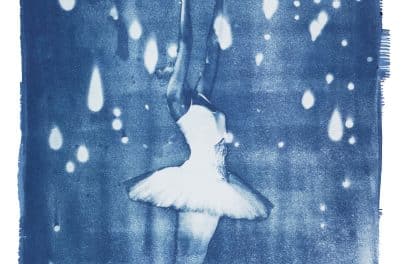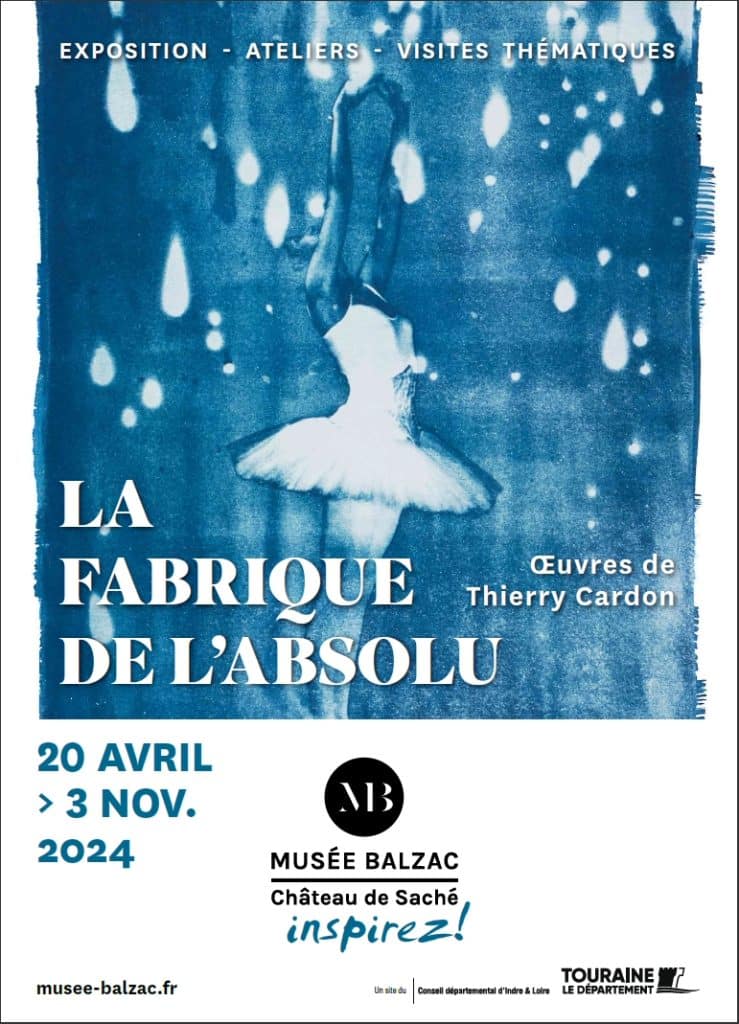
Exhibition > April 20, 2024 – November 3, 2024 THE FACTORY OF THE ABSOLUTEWorks by Thierry Cardon Artist-photographer Thierry Cardon explores the history of photography and immerses us […]
Artist-photographer Thierry Cardon explores the history of photography and immerses us in the world of one of its inventors, Nicéphore Niépce (1765-1833). He sheds light on the simultaneous development of this invention, the emergence of Romantic ballet and the publication in 1831 of Honoré de Balzac’s The Unknown Masterpiece (Le Chef-d’oeuvre inconnu), a paean to creativity. Through a series of installations, Thierry Cardon chronicles his personal vision of the life and work of Nicéphore, somewhere between phantasmagoria and alchemy. He imagines him photographing a dancer, inspired by the famous 19th century ballerina Marie Taglioni, performing choreographed interpretations of the four elements, until all his work is consumed by fire. The character of Nicéphore draws not only on the story of Frenhofer, the artist portrayed by Balzac in search of the perfect work of art in The Unknown Masterpiece, but also on the fate of Balthazar Claës, the crazed scientist in The Quest of the Absolute (La Recherche de l’absolu).

Experiments carried out as early as 1816 by Nicéphore Niépce (1765-1833) to find ways of capturing images using a camera obscura were to lead to the invention of photography. He developed the technique known as heliography which enabled him to obtain a positive, fixed image on a metal plate previously coated with Judean bitumen, after several days’ exposure. In 1829, he joined forces with Louis Jacques Mandé Daguerre (1787-1851), a specialist in the use of the camera obscura and creator of the Diorama, to improve the luminosity and quality of the images produced by their revolutionary techniques. They developed the physautotype process which produced an image with exposure times of less than eight hours. Following Niépce’s death, Daguerre continued his research into ways of capturing images and invented the daguerreotype, a photographic process with an exposure time of just a few minutes. In 1839, the French government under Louis-Philippe bought the invention from Daguerre and Isidore Niépce, son and heir of Nicéphore Niépce, so that it could be used freely by everyone. Honoré de Balzac was fascinated by this invention and posed for a daguerreotype portrait by photographer Louis-Auguste Bisson on two occasions in 1842. In his memoirs, Nadar recalled that Balzac, while being daguerreotyped, had imagined that “every body in nature is composed of series of spectra, in layers superimposed ad infinitum […]. Hence, for the body in question, with each new operation, there is an evident loss of one of its spectra, that is to say, of part of its constituent essence.” (Nadar, Quand j’étais photographe, Paris, 1899).
Around 1830, the world of ballet began to embrace the ideas of Romanticism, turning away from classical themes and towards a fascination with the realm of fantasy. The Paris Opera Ballet became home to “gnomes, water nymphs, salamanders, elves, nixies, vilas, peris and all those curious and mysterious creatures that inhabit the fantasies of the ballet masters” (La Presse, 1st July 1844). The first performance of the ballet La Sylphide* in 1832 saw the birth of a genre dominated by the fantastic and the mysterious, in a setting where nature reigns supreme. This new spiritual and ethereal aesthetic was accompanied by a lightening of costumes, with the appearance of the tutu, a white tulle skirt designed by Eugène Lami, and an evolution in techniques that encouraged dancers to leap ever higher and develop pointe dancing. Honoré de Balzac notes the phenomenon in La Comédie humaine (The Human Comedy), making frequent references to famous ballerinas Marie Taglioni (1804-1884) and Fanny Elssler (1810-1884) who “have revealed hitherto unnoticed poetry in dance” (Les Comédiens sans le savoir (the Unwitting Comedians), 1846).
Nicéphore Niépce (1765-1833) can be considered as the quintessential inventor. Early interests led him to develop a type of internal combustion engine, called a “pyreolophore,” the forerunner of the diesel engine, before conducting research into the photographic process known as heliography (“writing by the sun”). Although he was a very real historical figure, his personal life and the way he has been subsequently portrayed have made him seem like a character in a novel. His sudden death in 1833, before being able to complete his research with Daguerre, only served to underline the impression that he was never fully recognised for his inventions. But from the second half of the 19th century onwards, historians set out to rehabilitate the man who was credited with all the qualities required to be an inventor: tenacious, single-minded, stubborn, hard-working. Thierry Cardon follows in this tradition, making Nicéphore a fictional character inspired by figures in the works of Balzac: Frenhofer in The Unknown Masterpiece , searching for the perfect picture, and the crazed alchemist Balthazar Claës, striving to turn coal into diamonds in The Quest of the Absolute. He imagines him in his studio taking photographs of a ballerina who dances to the theme of the four elements, before bringing about Niépce’s death in a fire that consumes all his work.